Update: Apple has confirmed that iOS 14 – the company's next big software update – will be coming to the iPhone XS Max later in 2020.
The iPhone XS Max (pronounced 'Ten S Max') was the largest smartphone Apple had ever released when it launched in September 2018. With a 6.5-inch display, barely any screen bezel, and the now-iconic top-screen notch, it was a dominating presence in the hand.
Sure, it's no longer Apple's latest 'Max' product, with the iPhone 11 Pro Max taking that slot (and the iPhone 11 and iPhone 11 Pro stealing the title of latest flagship iPhones) but it's still an impressive piece of kit.
The new set of Apple smartphones led the tech giant to drop the iPhone XS Max from its stores to simplify the product range, but it's still available from retailers and carriers – and at a lower cost than when it launched.
While the iPhone XS Max was the largest and most expensive iPhone at launch, it's been surpassed in both size and cost by premium Android flagships. The phone still dominates your pocket, which was a bold statement from a firm that had resisted expanding screen size to the same gigantic degree as its Android rivals.
For those who crave more screen for video and gaming on the go, the expansive display of the iPhone XS Max (and newer iPhone 11 Pro Max) will be a welcome addition to Apple’s lineup, while those wanting a premium experience without the supersized dimensions can take comfort that it’s launched alongside the smaller iPhone XS.
And while it misses out on the iPhone 11 Pro Max's truly impressive night photography, the iPhone XS Max retains nearly all the perks inherited by its replacement. For a lower cost, you're still getting a plus-sized iPhone with the best iOS has to offer.
Watch our 48-hour review of the iPhone XS and iPhone XS Max video below
iPhone XS Max price and availability
- iPhone XS Max 64GB price: $1,099 (£1,099, AU$1,799)
- iPhone XS Max 256GB price: $1,249 (£1,249, AU$2,049)
- iPhone XS Max 512GB price: $1,449 (£1,449, AU$2,369)
iPhone XS Max specs
Weight: 208g
Dimensions: 157.5 x 77.4 x 7.7mm
OS: iOS 12
Screen size: 6.5-inch
Resolution: 1242 x 2688
CPU: Apple A12 Bionic
RAM: 4GB
Storage: 64/256/512GB
Battery: 3,174mAh
Rear camera: 12MP + 12MP
Front camera: 7MP + ToF
Apple no longer sells the iPhone XS Max, but when it did, it charged a lot. Luckily, you can still find the handset at other retailers, carriers and networks.
As we've already hinted, this is a premium phone with an even more premium price tag. The iPhone XS Max started at $1,099 (£1,099, AU$1,799) for the 64GB model, which is $100 (£100, AU$170) more than the iPhone XS.
If you want more internal storage, the 256GB iPhone XS Max price was $1,249 (£1,249, AU$2,049), while the most expensive 512GB version will set you back a staggering $1,449 (£1,449, AU$2,369).
At the time of launch, there was no mainstream smartphone that costs more than the 512GB iPhone XS Max did at launch, putting it in a league of its own in terms of pricing. Now, there are even more expensive mainstream phones but this is still a lot of money for a handset.
Plus, the launch of the iPhone 11 family has brought the price down. At the time of our latest update to this review, the handset with 64GB of storage cost around $600, £1,000 or AU$900 so the discounts in some markets have been thorough than in others.
- These are the best iPhone XS Max deals in the UK
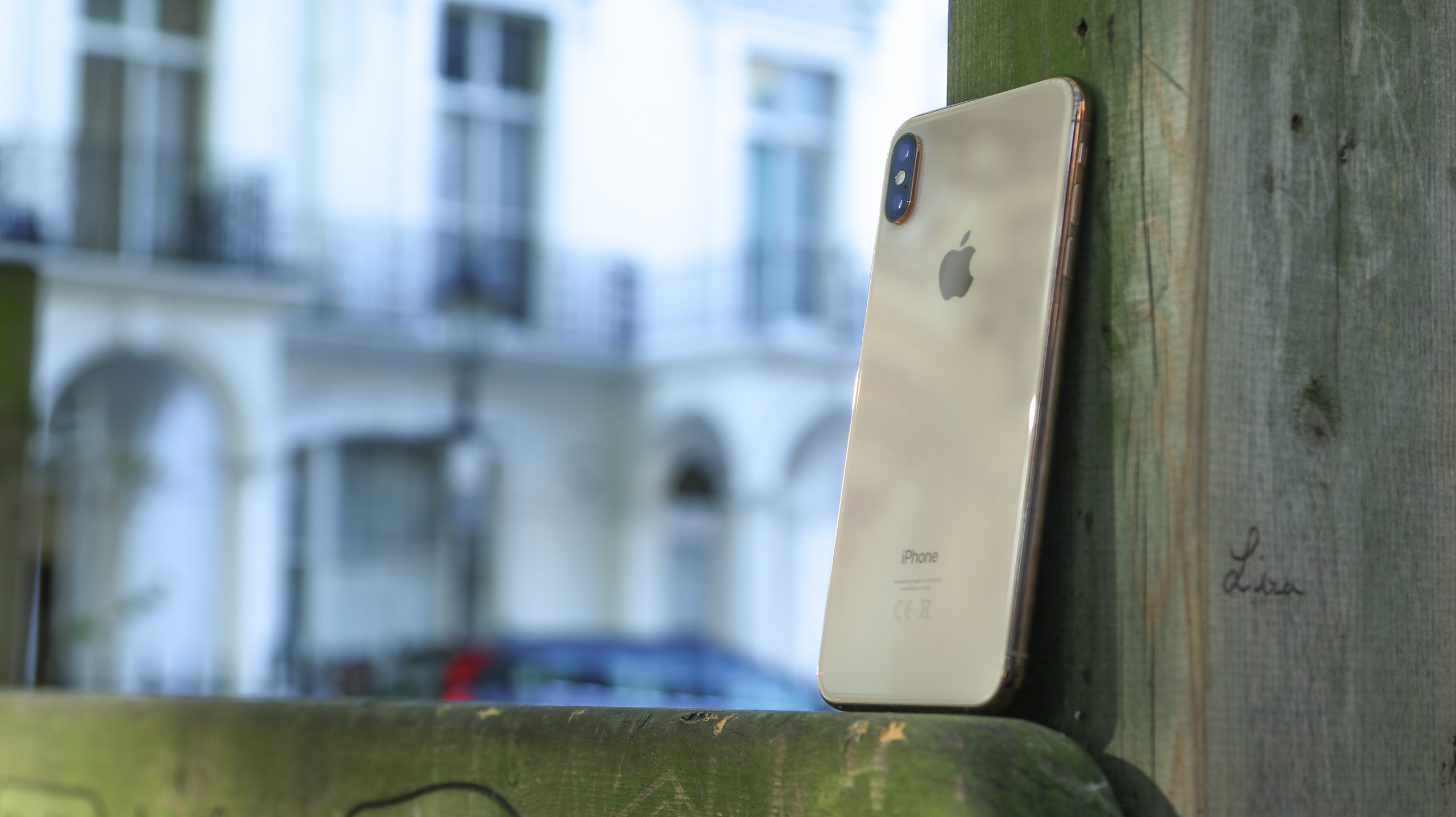
Design
- Same design as iPhone X, but bigger
- A touch shorter and narrow than the iPhone 8 Plus, with a bigger screen
The iPhone XS Max design is deceptive. Pick it up, and the rounded sides of the handset make it feel noticeably thick.
The result is a phone that doesn't sit as comfortably in the hand as it could, and considering the size and cost of the XS Max it's a phone you want to be able to securely hold. This is only half the story though.
We compared the iPhone XS Max to a number of phones during our in-depth review, including the Samsung Galaxy Note 9 (6.4-inch screen), OnePlus 6T (6.41-inch) and Sony Xperia XZ3 (6-inch), and the iPhone felt thicker, and less planted in the hand than all of them.
The funny thing is though, the iPhone XS Max is thinner than all of those phones at just 7.7mm.
The reason for this is simple: tapered edges. The Samsung, Sony and OnePlus all taper their rear edges, giving the impression of a thinner device while also allowing them to sit a little better in the curvature of your hand.
The iPhone XS Max has a totally flat back that's a little more awkward to hold, and we found that a tactfully-placed pinkie finger on the underside of the phone was a must for one-handed use.
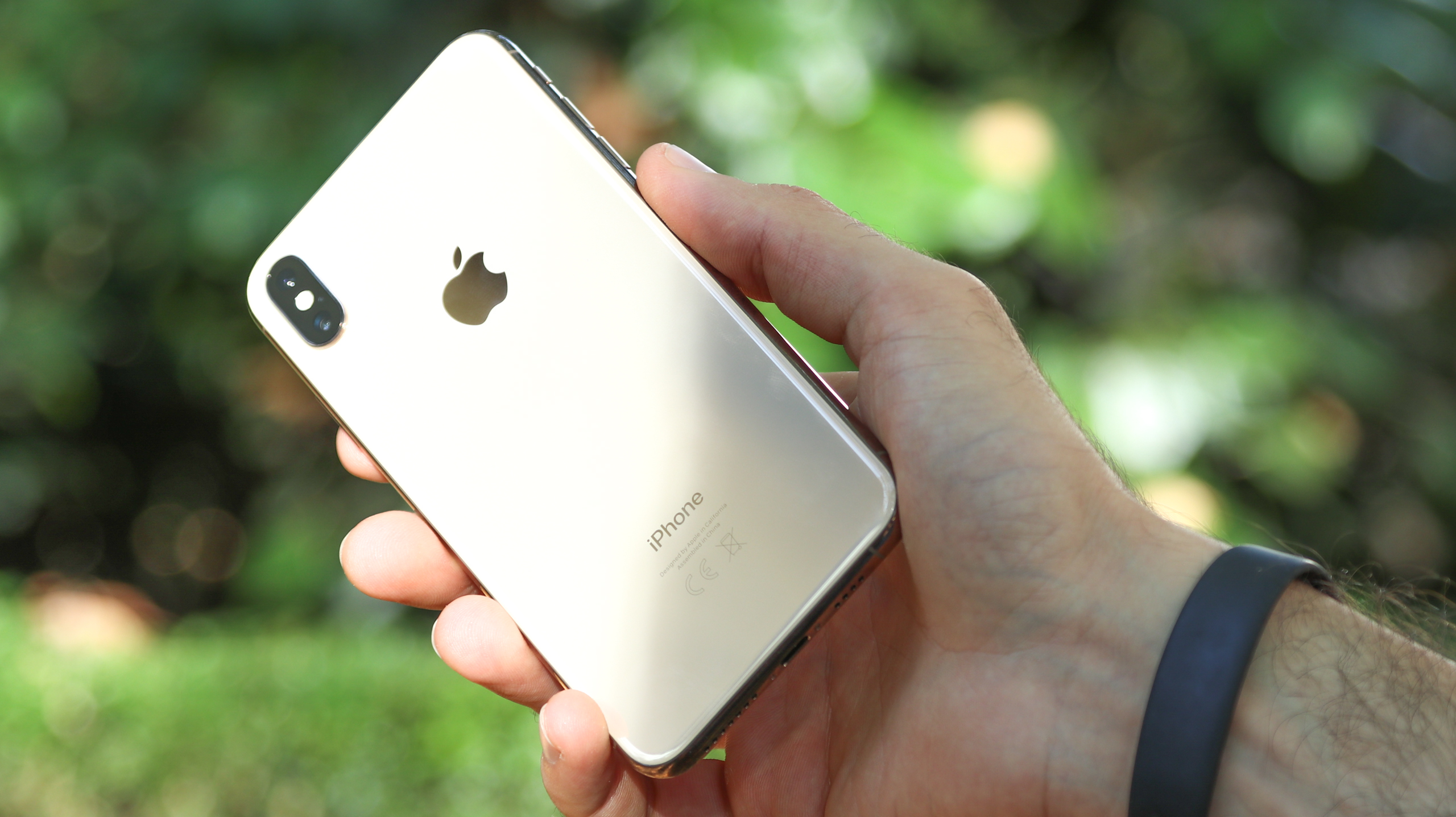
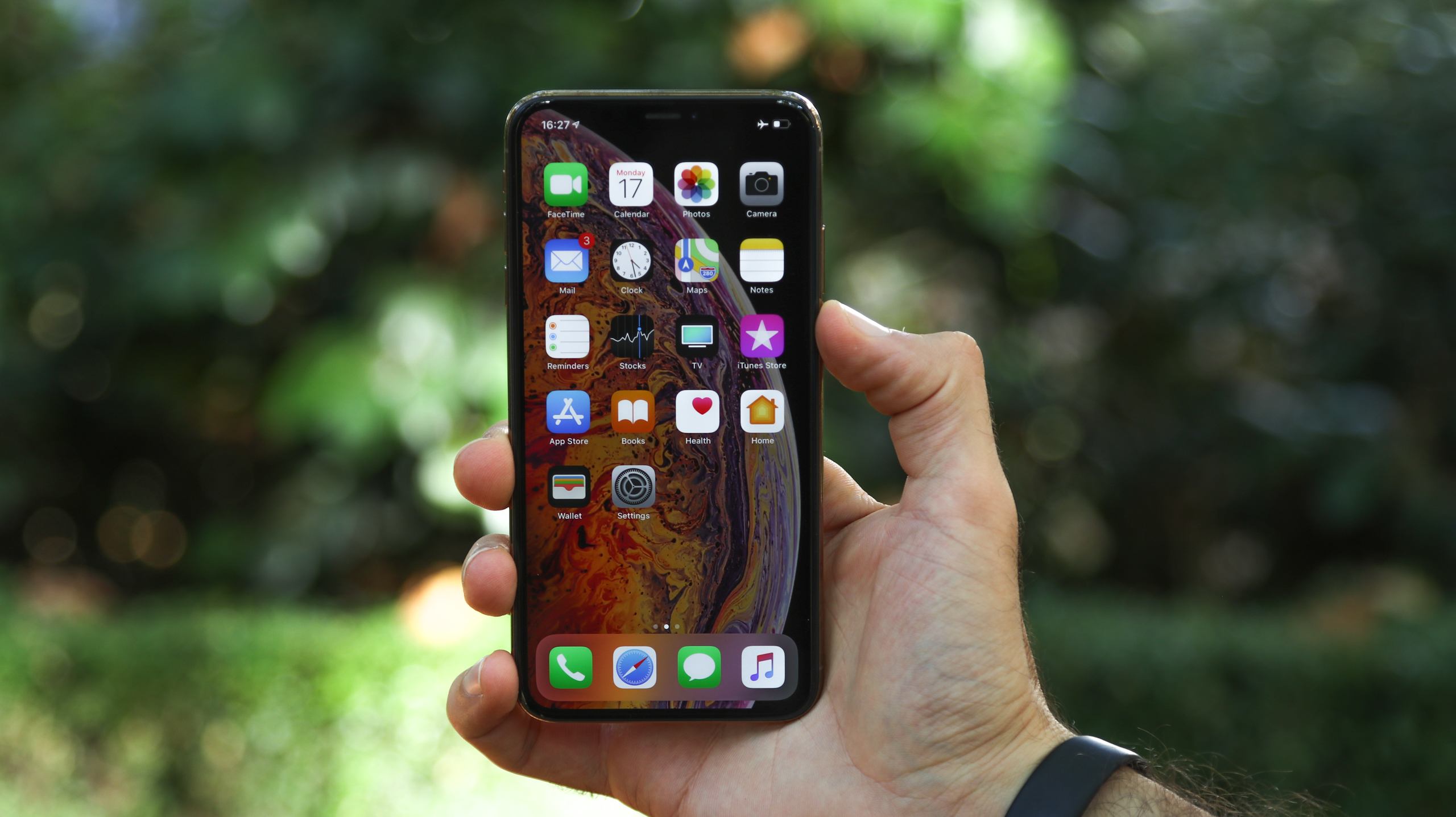
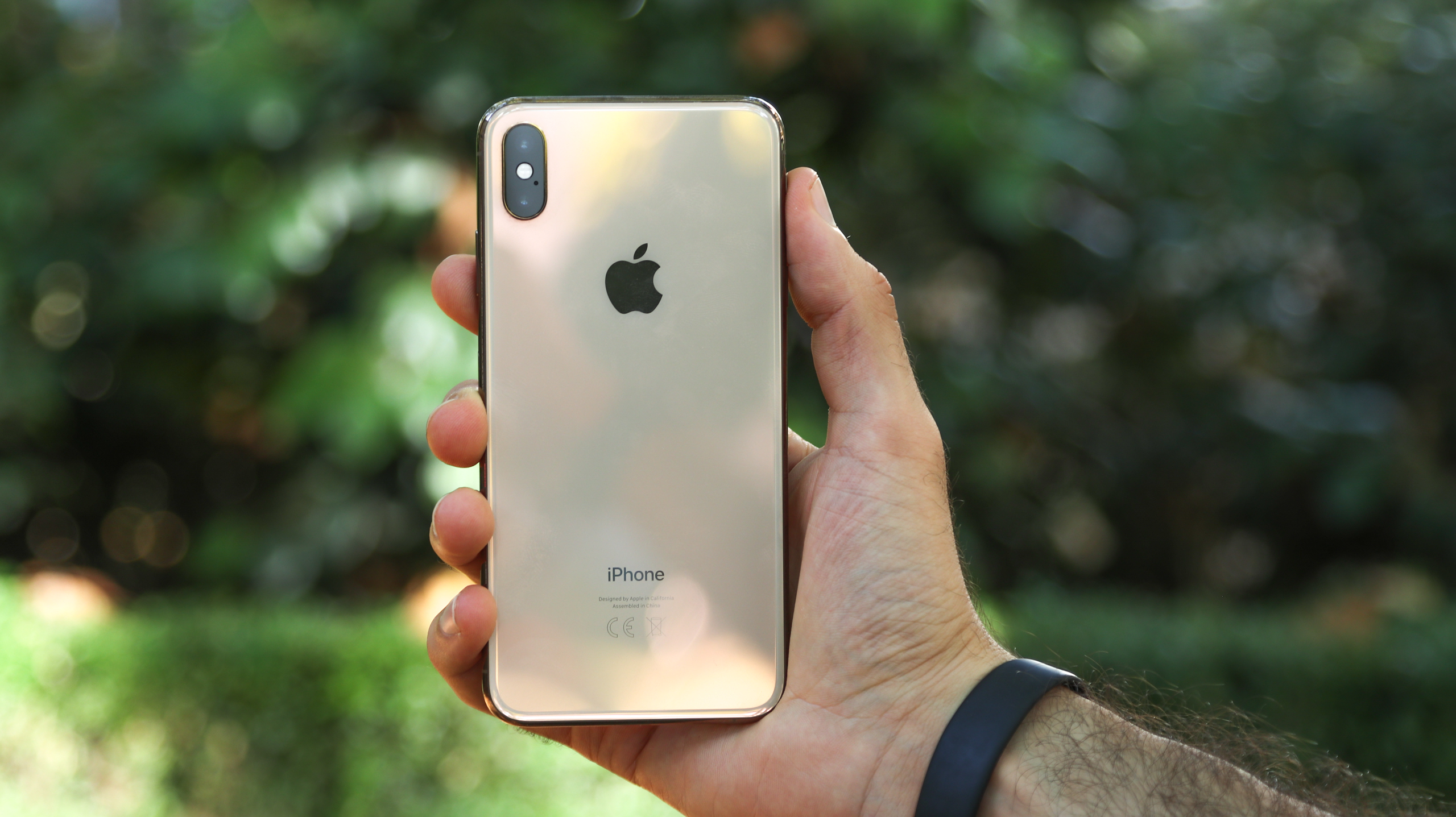

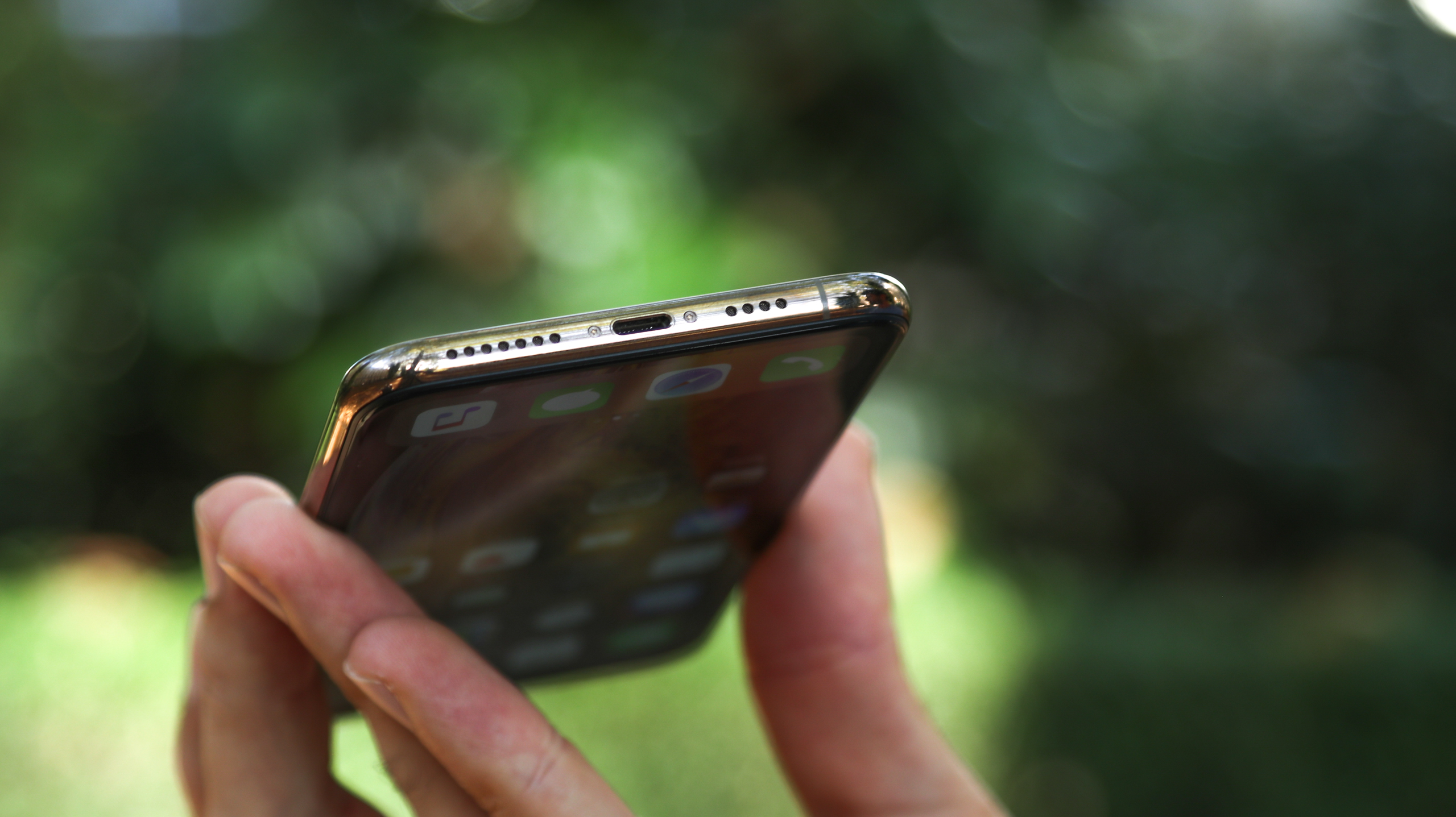
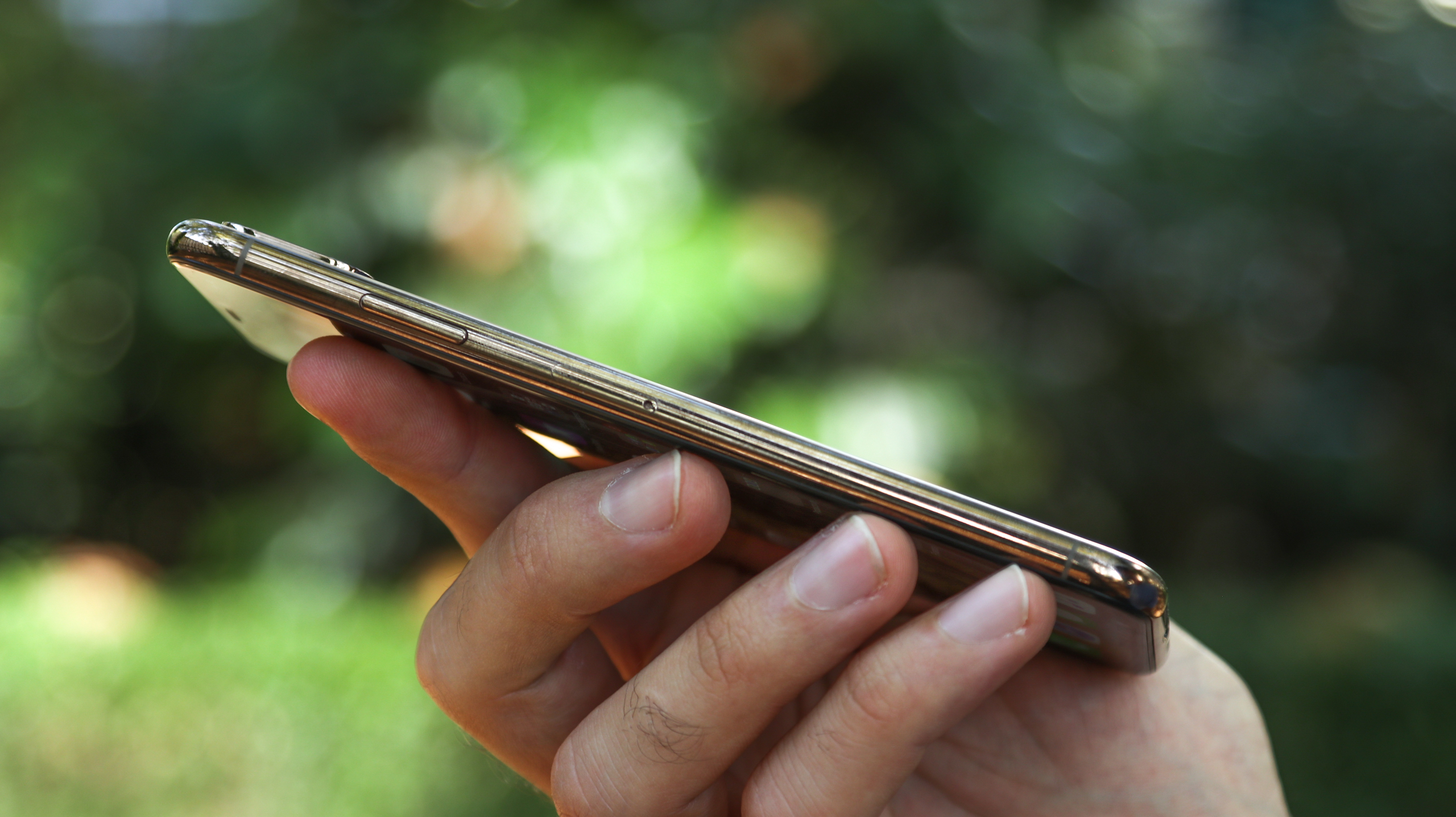
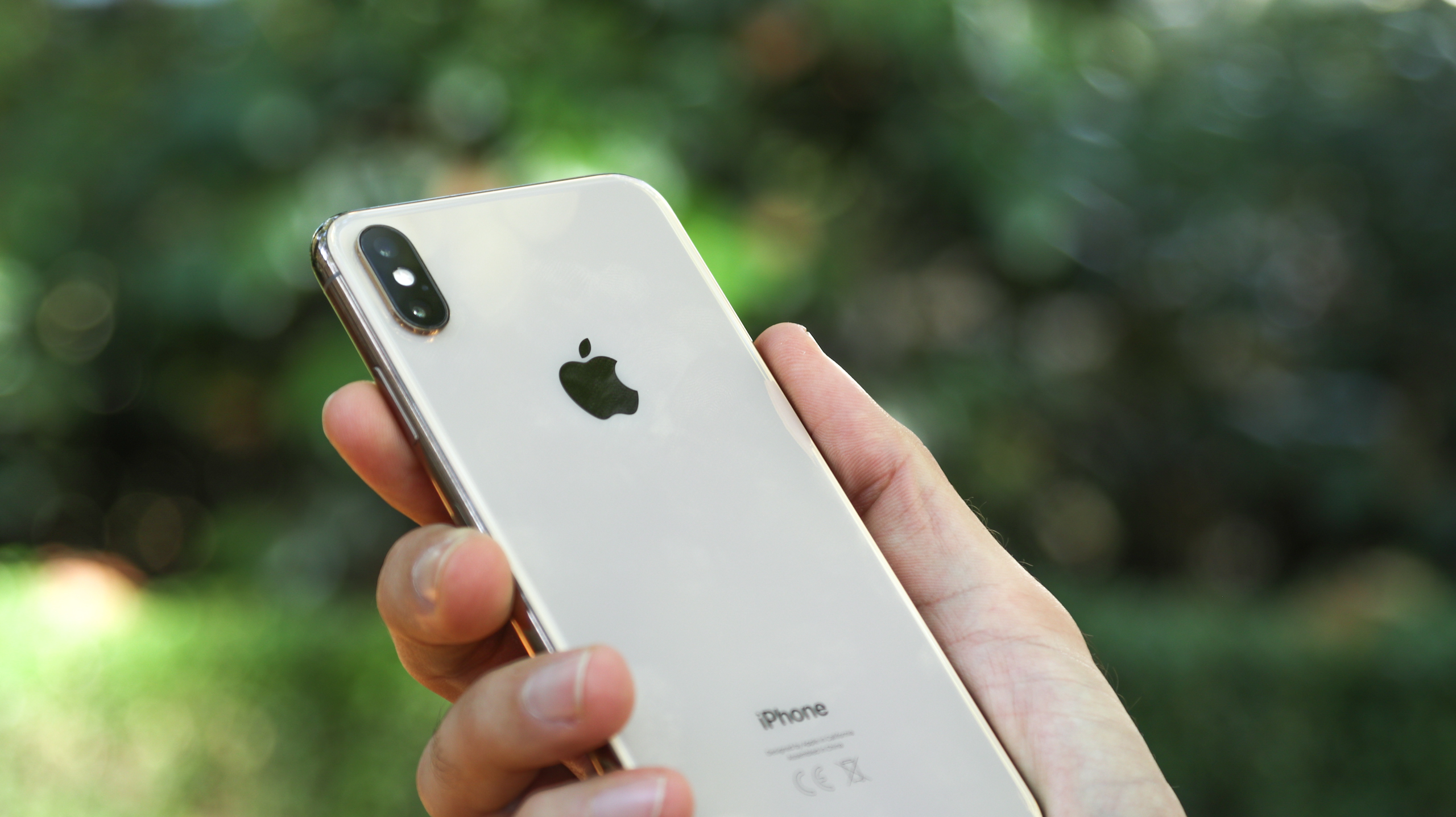
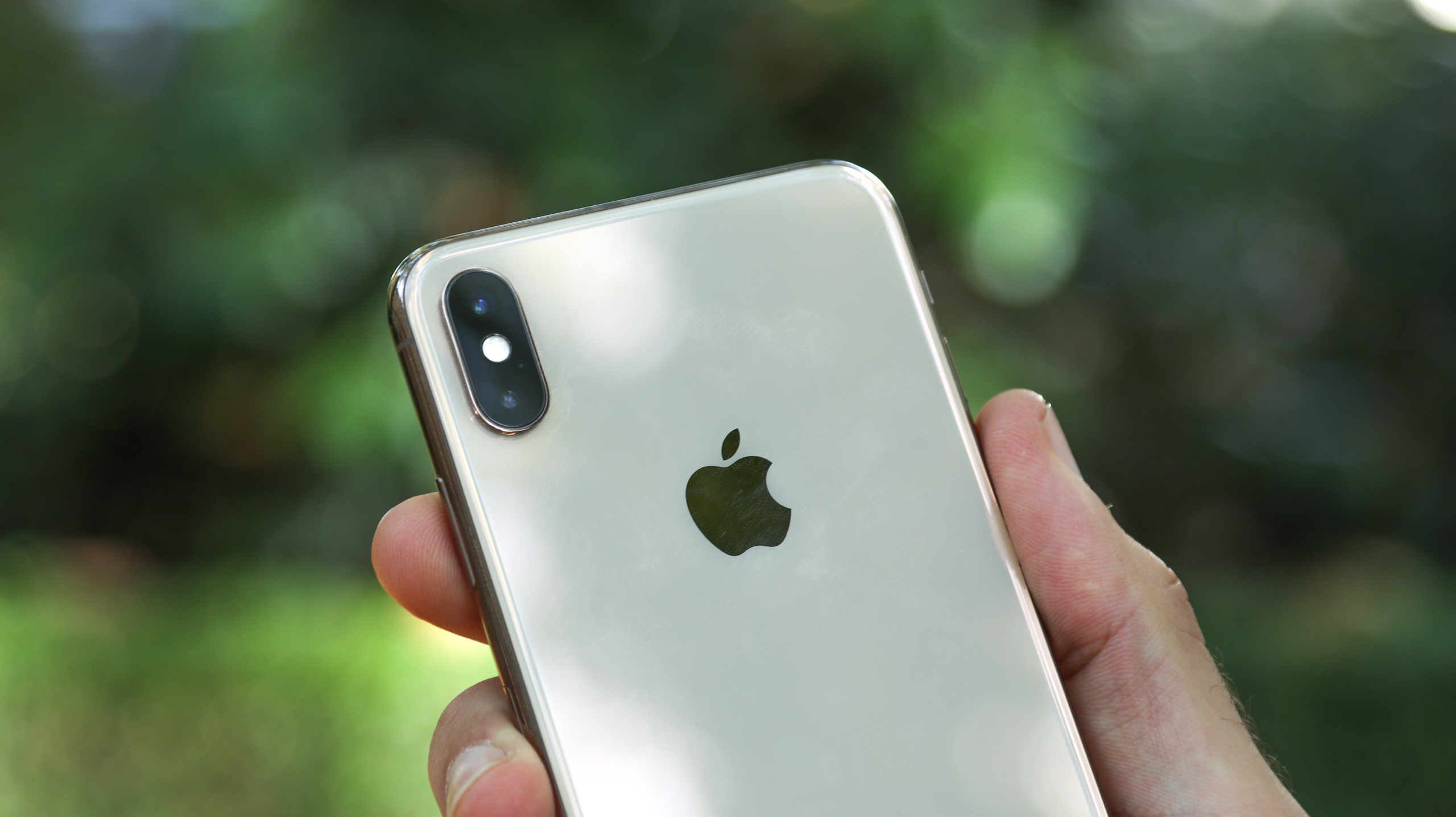
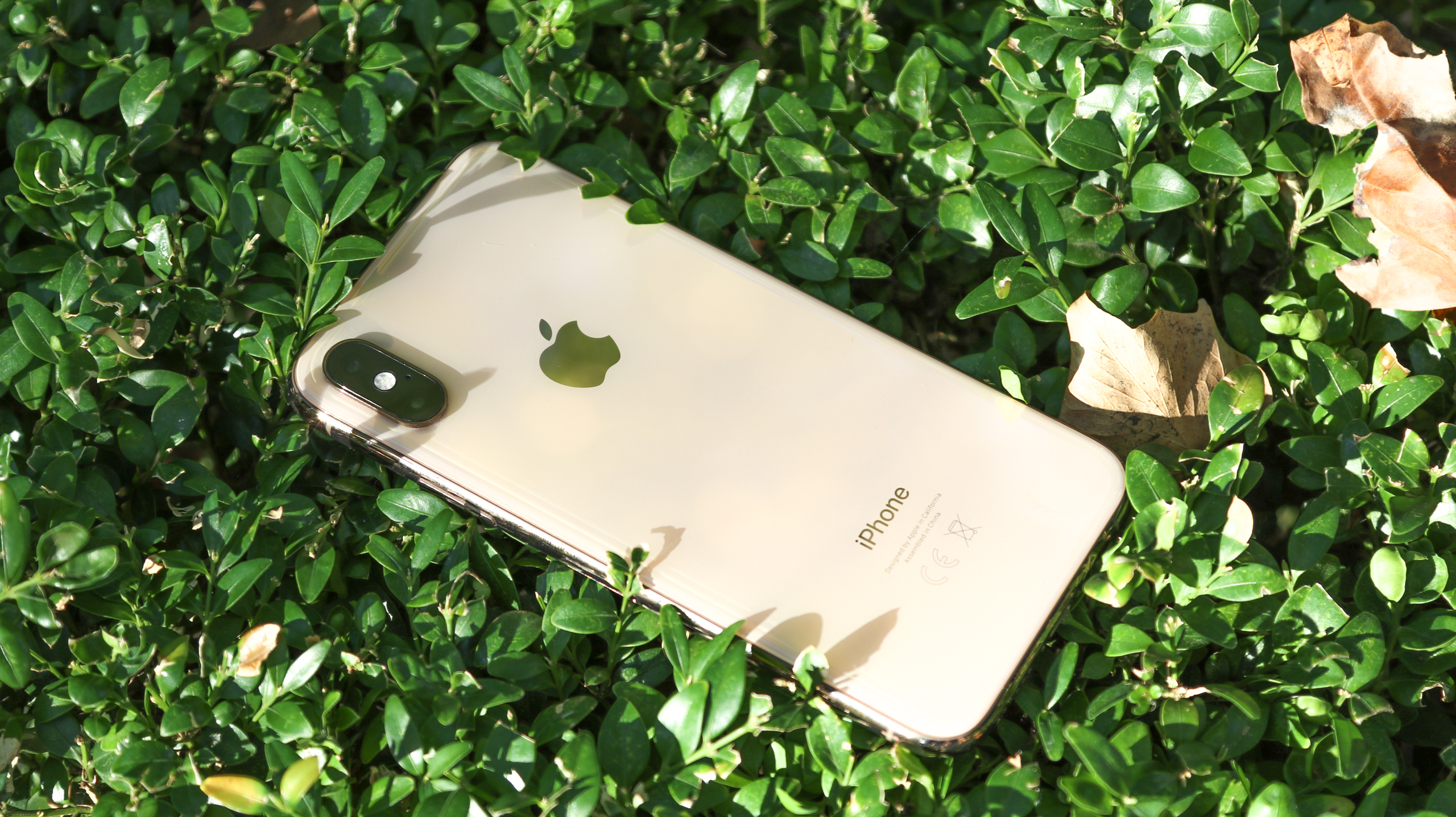
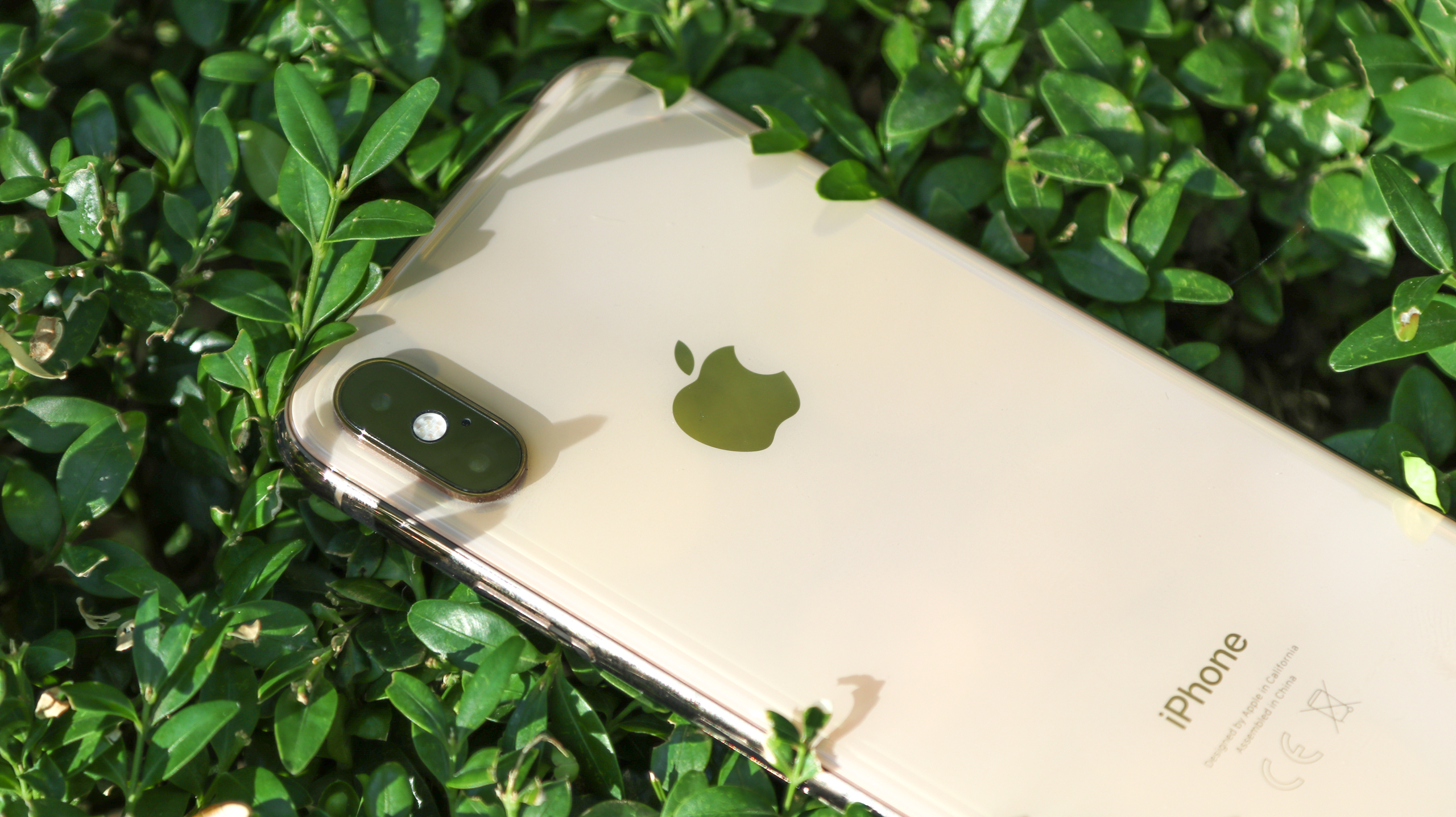

What's more impressive is that the XS Max manages to squeeze a huge 6.5-inch display into a body that's a touch shorter and narrower (at 157.5 x 77.4mm) than the iPhone 8 Plus, which only boasts a 5.5-inch display.
While the iPhone XS Max does feel a little chunky in the hand there's no questioning the fact that you're getting a huge amount of display real estate crammed into a form factor which does a good job of keeping it usable.
The steel frame around the outside and the new formulation of glass on the front and rear – which is tougher than the glass on the iPhone X – give the iPhone XS Max a supremely premium look and feel, while its resistance to dust and water has also been enhanced.
Apple has upped the protection to IP68, enabling the iPhone XS Max to be submerged to a depth of up to two meters for 30 minutes without suffering any ill effects. Apple claims it's tested the protection in a number of liquids, including salt water, chlorinated water, milk, wine and beer, although we wouldn't advise purposefully exposing the handset to any of these.
It's worth noting that Apple's warranty, like those of all phone manufacturers, doesn't cover 'liquid contact' damage, which means if the liquid resistance does fail on the iPhone XS Max you won't be covered.

There's no headphone jack on the iPhone XS Max. The port is now totally dead after Apple killed off the iPhone 6S and iPhone SE post-iPhone XS launch (the last two handsets with the 3.5mm jack that were available from the firm's site), which means you get a centralized Lightning port alongside speaker and microphone holes on the base of the iPhone XS Max.
There's a pair of Apple EarPods with a lightning connector in the box with the iPhone XS Max, but if you plug this into the lightning port on the base of the phone you can't connect the charging cable to it at the same time.
Thankfully, the iPhone XS Max also supports wireless charging, so if you have a charging pad to hand you can top the handset up while listening to a wired set of headphones.
The power/lock key is on the right side of the XS Max, and is easy enough to hit with thumb or forefinger, while the volume keys sit below the physical mute switch on the left of the handset.
Hold the power/lock key down and you'll bring up Siri, which means turning off the iPhone XS Max requires you to hold down the power and volume up keys until an on-screen prompt appears.
The SIM card tray continues to be located below this key, but there's a new feature inside the iPhone XS Max (and XS). The handset is dual SIM enabled, with an eSIM embedded inside the handset.
This allows you to insert a SIM from the carrier of your choice, and then enable the eSIM on a different plan or carrier. It's worth noting that not all carriers support eSIM technology, and availability varies by region, so make sure you check before signing up to anything.
Overall though, Apple hasn't moved far from the design of the iPhone X with the iPhone XS Max, other than to stretch it a little. There is, however, a new color option over the X.
Apple introduced a new gold finish for both the iPhone XS Max and XS, and it's a little richer than the more subtle gold finish option for the iPhone 8 and 8 Plus. If you find the gold a bit too much, the iPhone XS Max also comes in Silver and Space Gray.
- Keep your mobile secure with one of these iPhone VPN apps
Display
- Huge 6.5-inch OLED display is the biggest ever on an iPhone
- HDR support for an enhanced viewing experience
One of the main things – well, really the only main thing – that's different about the iPhone XS Max over the the smaller iPhone XS is the screen, extended as it is to 6.5 inches compared to the 5.8 inches of the 'normal' XS.
That screen size makes all the difference though – holding the two new iPhones side by side you feel like the larger model just offers so, so much more space to play with.
It's not even that large, as we've mentioned in the design section, given that it fits into roughly the same footprint as the iPhone Plus models of the last four years, so while you are getting loads of screen, this isn't a massive iPhone in comparison.
We're still not sold on the need for HDR as a 'must' in a smartphone though – watching Avengers: Infinity War on the iPhone XS Max was a pleasing experience thanks to the larger display, but there wasn't a moment where we were wowed by the color reproduction, or the contrast between light and dark scenes.
That's not to say it wasn't good, but it's not jaw-dropping enough to warrant buying this phone for that feature alone – although that said, Apple isn't charging a premium to own its content in HDR from the iTunes Store, so really it's a 'nice-to-have' feature.
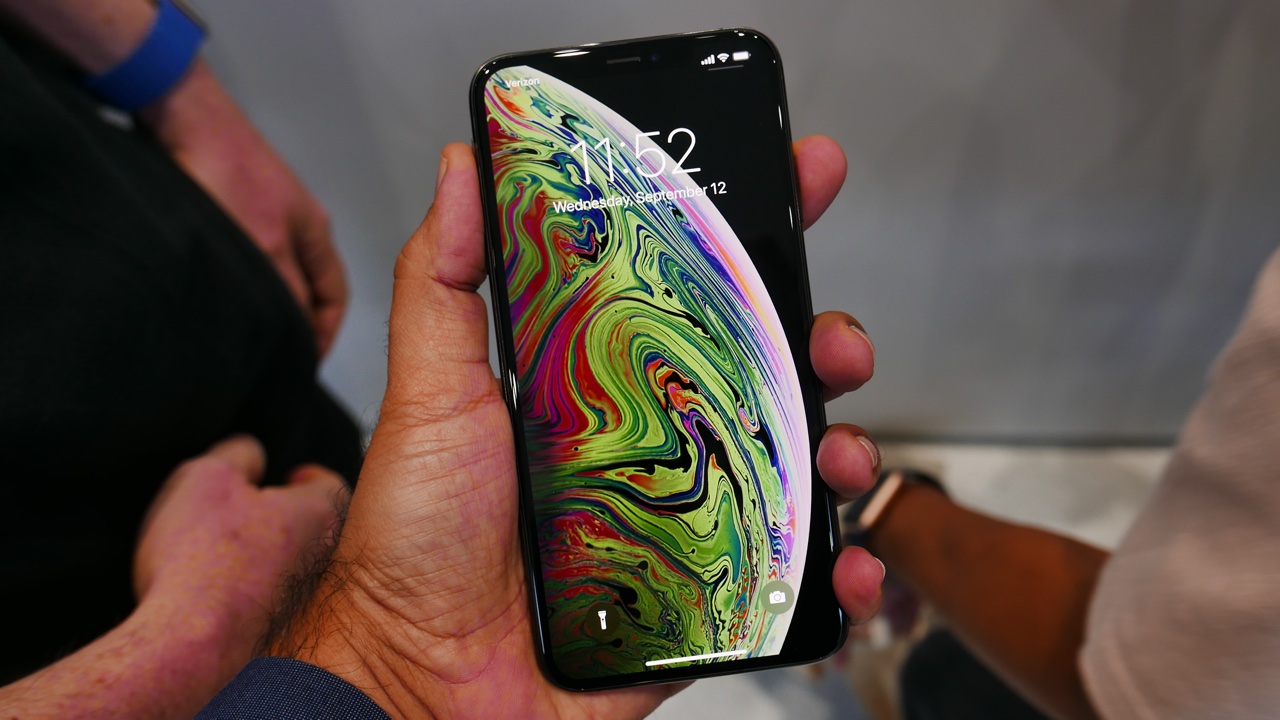
However, we did notice that the action in the film juddered a fair bit, which was quite jarring. We initially thought this was due to low battery, but even when the phone was charged up the same effect was present.
The OLED panel that makes up the Super Retina HD display in the iPhone XS Max is bright and colorful though, and has a 2688 x 1242 resolution, which equates to a 458ppi pixel density. Gone are the days where we bemoaned Apple's handsets for being behind the times in terms of resolution.
All those pixels mean a super-sharp display, with images and text rendered clearly. Apple claims the display on the iPhone XS Max (and iPhone XS) boasts 60% better dynamic range versus the iPhone X, making photos and videos appear more vivid.
It may not be the QHD resolution boasted by the likes of the Samsung Galaxy S10, Samsung Galaxy Note 9, Huawei Mate 20 Pro and Sony Xperia XZ3, but it is superior to the panels on most other top-end phones, such as the OnePlus 6 and Huawei P20 Pro.
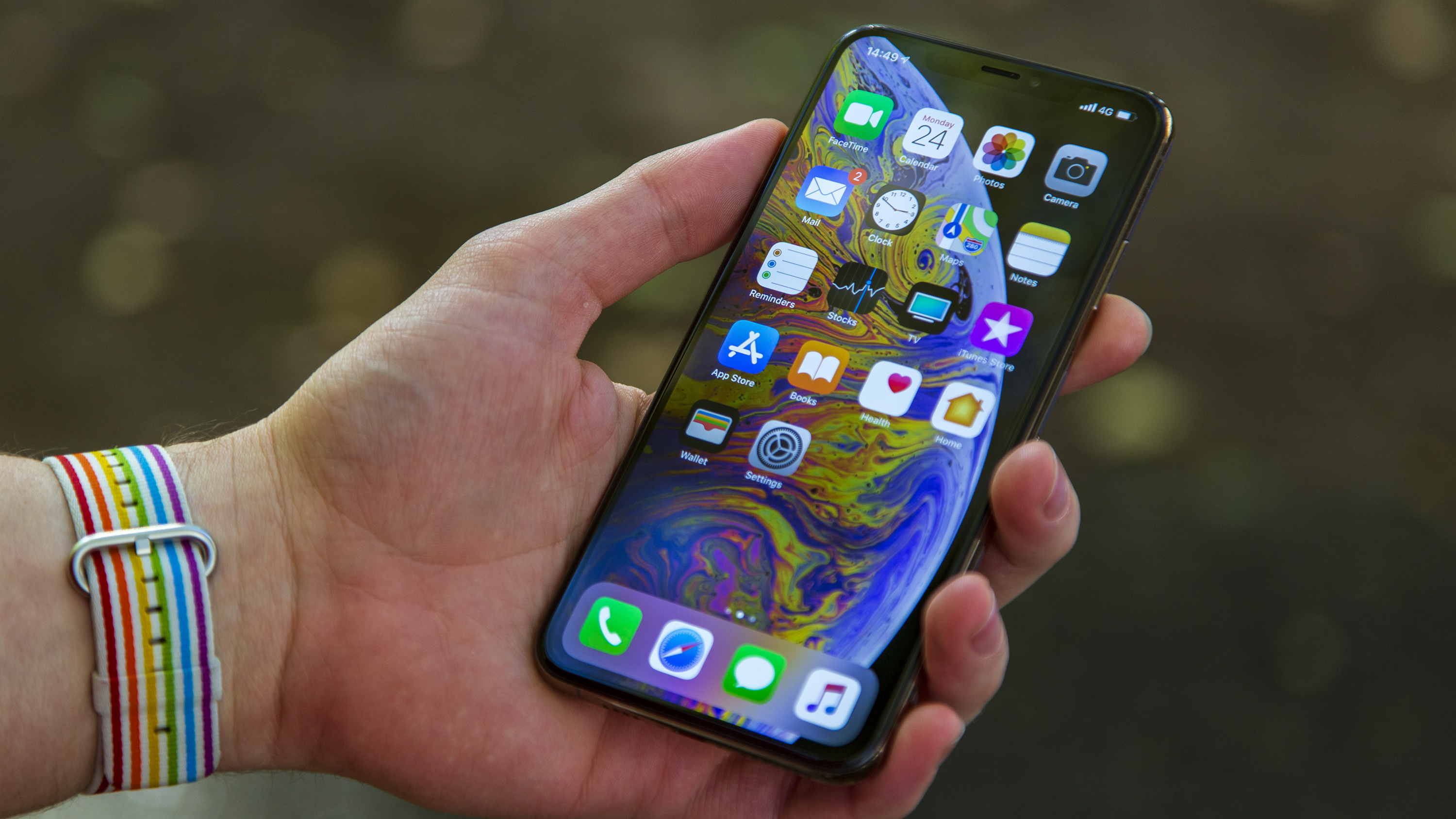
Comparing the iPhone XS Max side-by-side with the Sony Xperia XZ3 however, HD movie playback looked better on the Sony.
Apple has upgraded the speakers on the iPhone XS Max to be 'wider' by firing the sound directly at each ear – it's hard to fully test this, but we did notice there was a 'deeper' rumble from the phone, and the sound quality impressed.
Image quality is noticeably sharper on the XZ3 – helped in part by its superior pixel density – and it's able to pull out more tonal variation when watching dark content than the XS Max, thanks to Sony's smart upscaling technology.
Face ID
- There's no Touch ID, with Face ID your only biometric option
- Not the fastest, but has great integration with banking apps
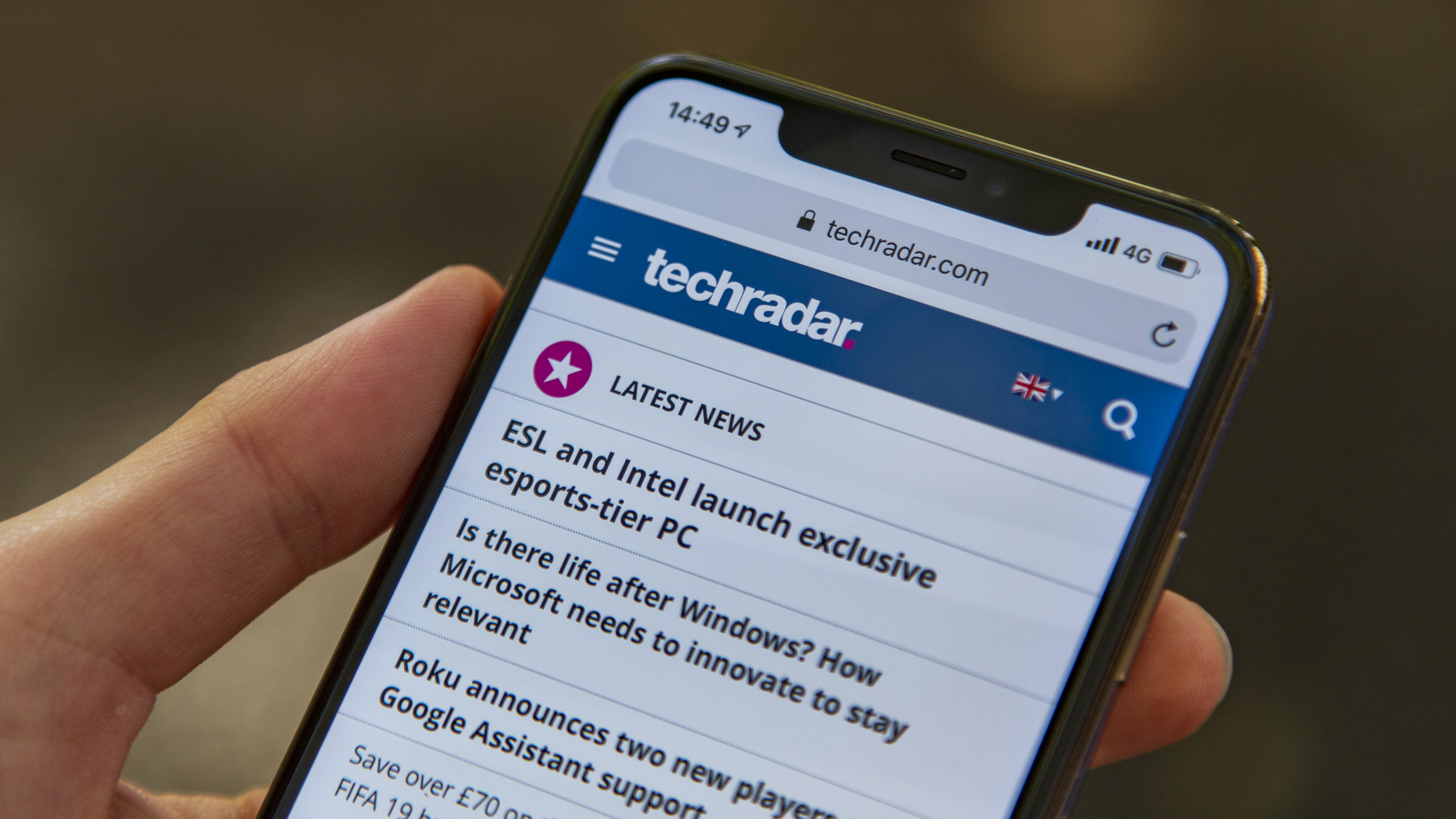
Face ID is the biometric of choice for Apple these days, replacing the Touch ID fingerprint scanner and embedding itself in the notch at the top of the display.
Apple says it's more secure, and slightly faster, but it's not quite perfect. We've used a lot of face unlock features on phones recently, and Face ID still feels a little slow in comparison.
Pick the iPhone XS Max up to wake the screen (or hit the power/lock key), and in the time it takes you to swipe upwards to unlock the phone, Face ID will recognize you.
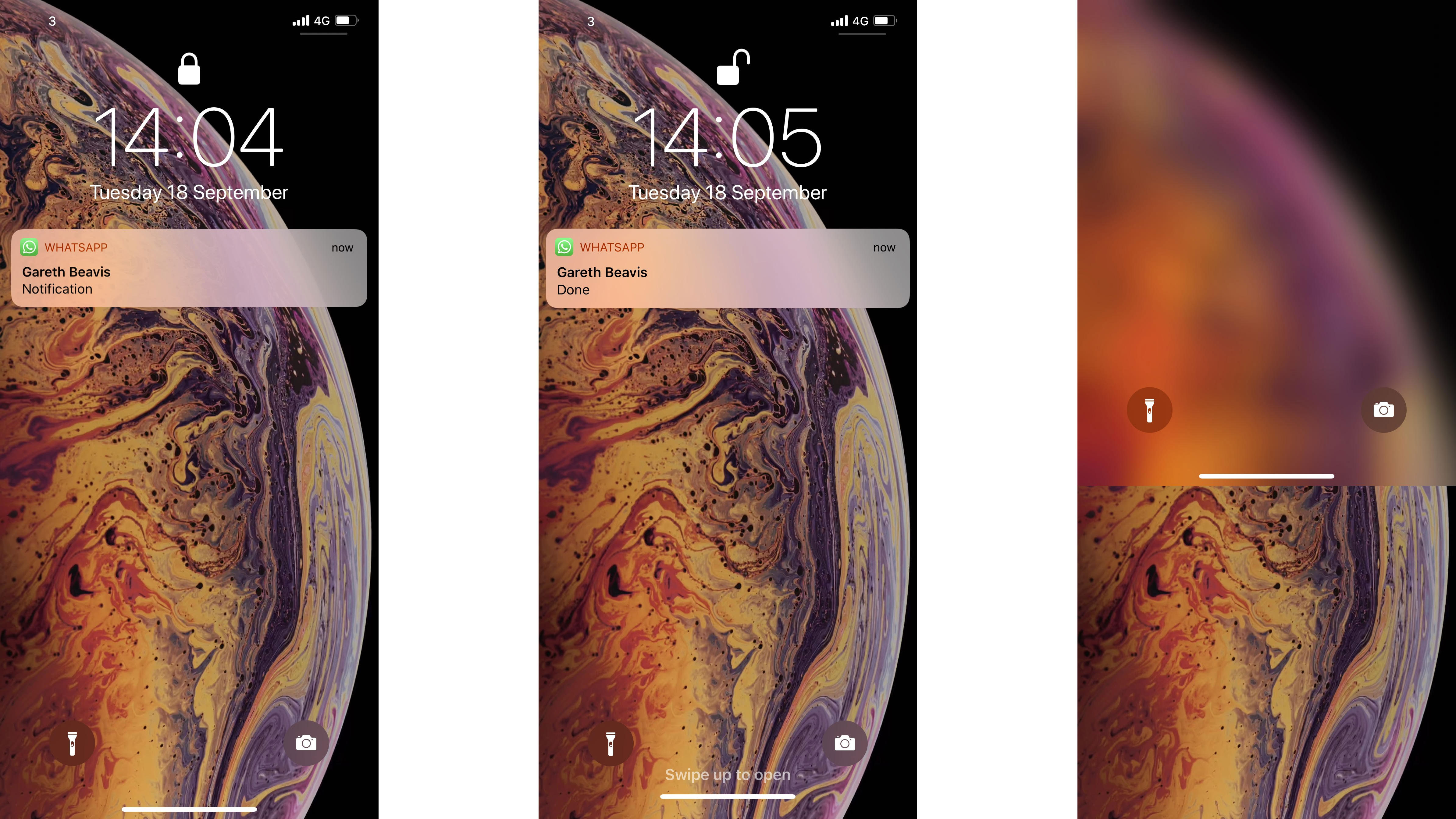
It's simple enough, but we've seen faster recognition on the OnePlus 6, and face unlock on that phone is also better if you're glancing at it from an angle.
The delay on the iPhone XS Max isn't huge, but it's just long enough to notice the small lag if you've used an alternative system. We that noted Face ID also struggled in direct sunlight – which is going to be a problem for any facial recognition system – and it's a use case where a fingerprint scanner wouldn't have any issues.
Integration of Face ID into apps is very good, with our banking apps supporting the technology in lieu of a fingerprint scanner, making it easy to securely sign into our accounts.
Note also that Apple has improved Face ID for the iPhone 11 Pro Max and the rest of the iPhone 11 range, so if you can stomach the price then Apple's latest phablet is an alternative.
iOS 12
- The latest OS from Apple comes with new features including Screen Time
- You'll want to enable 'Reachability' in Settings for better one-handed use
The iPhone XS Max arrives with the iOS 12 operating system on board, with handy little additions such as grouped notifications and an easier to access (and manage) multi-tasking window arriving alongside bigger features such as Screen Time, which tracks how often you use your phone, and what you're using it for.
From the Screen Time menu in settings you can set yourself usage limits, helping you use your phone less. You can read more about Screen Time, the other new features in iOS, and how the software performs on the new XS handsets, in our iPhone XS review and iOS 12 explainer.
It's worth noting too that since launch the iPhone XS Max has been updated to iOS 12.1.4, gaining additional emoji and Group FaceTime in the process, and then iOS 12.2, iOS 12.3 and iOS 12.4.
If you like iOS 12, you'll likely also enjoy iOS 13 that landed on the phone in 2019. So if all you want is the latest software, you won't need to pick up an iPhone 11. We've yet to test the software on this phone so we haven't updated our review with our findings, but it brings a variety of new features to your phone such as a dark mode option.
As on the iPhone X, one feature is noticeably absent from Apple's new trio of devices: the home button. Not only does that mean there's no Touch ID fingerprint scanner – Face ID has you well covered on the iPhone XS Max – there's no home button at all.
Instead you're required to use Apple's new gesture navigation, introduced with the button-less iPhone X. While some may be disappointed by the lack of a physical button on the front of the iPhone XS Max, the good news is that the gesture inputs are easy to learn.
You swipe up anywhere along the bottom of the screen to exit an application, while extending this swipe takes you into the multi-tasking window, where you can jump between, and remove apps from, the sideways-scrolling list of thumbnails.

It's pretty much business as usual then, but the increased size of the iPhone XS Max presents its own problems – chiefly, attempting to reach the top of the display.
Never have our fingers encountered such a tall screen on an iPhone, and stretching our thumb towards the notch isn’t easily, especially when holding the phone in one hand.
On Apple's past Plus models a double click of the home button would draw the screen down 50%, allowing you to tap the required action at the top of the screen. The feature is called Reachability, but oddly on the iPhone XS Max – arguably the phone where it's most warranted – it's not turned on by default.
It is there though, in Settings > Accessibility, and instead of double clicking the home button, you swipe down, over the bottom of the screen to engage it. When enabled it's easy to use – we'd argue easier than double clicking the home button – and makes one-handed use much more achievable.
With more screen real estate it provides more space for applications, and Apple has taken advantage of this in a few of its own apps. Turn the iPhone XS Max to landscape and you'll get a split view in the Calendar and Messages apps, allowing you to view more information with the screen divided in half.
It's useful, but limited to only a few apps; however this split-view functionality will likely be implemented by more developers in the coming months as the XS Max starts to get into the hands of consumers.
Developers are specifically coding for the iPhone XS Max's huge screen in more ways too. One example is Nat Geo's website, which re-renders when you flip into landscape mode, taking advantage of the full width of the display for an enhanced browsing experience.
The likelihood is that in the coming months landscape experiences on the iPhone XS Max are only going to get better as more developers look to take advantage of the additional screen real estate.
A12 Bionic chip
- Apple's new chip is 40% more efficient and 50% more powerful
- Results in fluid navigation and fast app load times
The iPhone XS Max is powered by Apple's A12 Bionic chip, which promises to be 40% more power-efficient than last year's model, while the GPU is said to be 50% more powerful than the A11 Bionic chip in the iPhone X. Of course, the A13 Bionic in the newer iPhone 11 Pro Max and the rest of that range is better still.
Using the XS Max alongside the X, it's clear that the new handset has the beating of the A11-powered device. From general navigation around the handset, to editing the lighting in portrait shots, to loading up games such as Clash Royale and PUBG, the iPhone XS Max is noticeably quicker.
We ran the Geekbench 4 CPU test on the iPhone XS Max, and came out with an average multi-core score of 11,465.
That's higher than the iPhone X (and every Android flagship), which scored an average of 10,247, starkly illustrating the improvements made by Apple with the A12 Bionic chip.
What this means is that navigating iOS 12 on the iPhone XS Max is a clean, slick experience, with no signs of slowdown.
That's partly down to Apple's excellent integration of hardware and software, and we expect performance to stay at this level several months into using the phone.
We'll be updating this review throughout the lifetime of the iPhone XS Max, so you'll be able to see if performance can continue at this high level – and for more information on the new chipset, check out the section in our in-depth iPhone XS review.
Battery life
- Better battery life than the iPhone X
- Lasts a whole day on a single charge
Battery life has long been a contentious point for iPhones, but the iPhone XS Max has a couple of things in its favor in this department.
First up is the newer, more power-efficient A12 Bionic chip – which also lands in the iPhone XS and iPhone XR – which should be able to eke extra life from every mAh in the power pack.
Secondly, there's the power pack itself. It's said to be 3,174mAh, which is larger than the 2,691mAh one found inside the iPhone 8 Plus, and it makes it the biggest battery Apple has ever put inside a phone.
Apple says the iPhone XS Max battery offers an additional 90 minutes of power over the iPhone X. While it's unclear how Apple arrived at that particular figure, we can be sure about one thing: the iPhone XS Max can last a day on a single charge with moderate to high usage.
That's with us taking the phone off charge at around 7am, and then plugging it in just before midnight with just a few percent left in the tank and low power mode enabled.
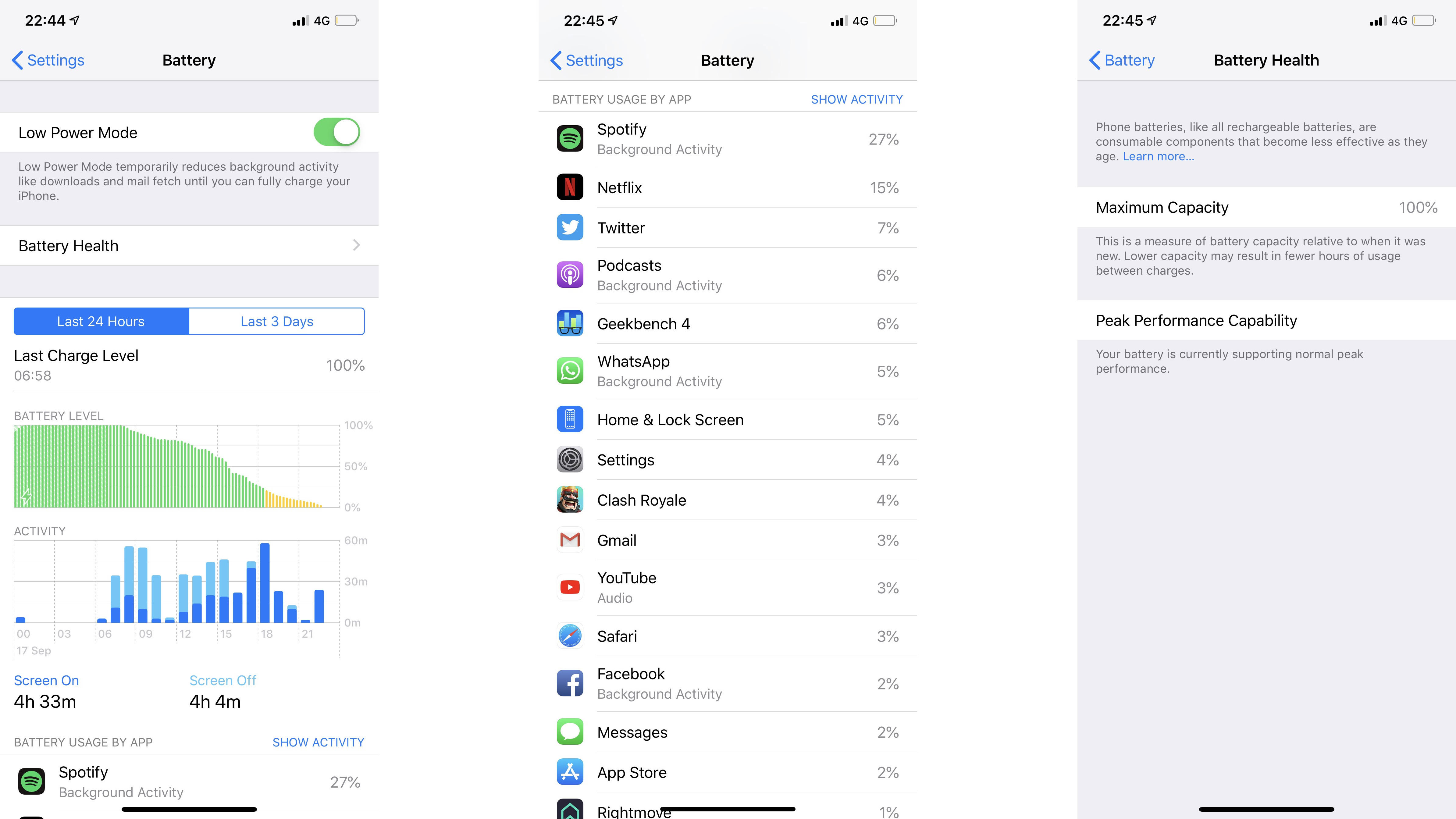
Our usage generally consisted of a couple of hours of gaming, a couple of hours of music and podcast streaming, a mix of social media, email, web browsing, messaging and call activity, plus a few snaps here and there. We also had an Apple Watch 3 connected during the whole review period.
If you're going to push the handset with an intensive app such as PUBG, the battery is going to take more of a battering, but still won't be a major drain.
A couple of hours of hotspot usage on the iPhone XS Max however, ultimately ended up with it dying at around 7pm, so if you rely on your phone to provide an internet connection to your other devices you'll want to carry a charger with you.
This isn't a phone that will last you a day and a half to two days with moderate usage, but if you're less intensive then this is possible as on the lighter days we managed to head to bed with at least 30% of power remaining.
However, if you're a lighter user in general you may want to hold on for the iPhone XR, which still offers a big screen, but a lower price which may be more suited to your usage pattern.
The iPhone XS Max is there to stream video and play games, with a battery that should keep you going all day with these intensive activities. Having said that, all three iPhone 11 range handsets have better life according to Apple.
Wireless charging is convenient if you have charging pads, but they need to be purchased separately, as does the fast-charging block that will enable you to juice up your iPhone in double-quick time – this was rumored to be coming in the box with the new iPhone XS pair, but didn't materialize.

Camera
On the surface it appears that the iPhone XS Max has the same camera as the iPhone X.
The protruding module on the rear of the handset still houses two 12MP snappers in a vertical stack, separated by a Quad-LED True Tone flash.
As before one camera is telephoto and the other wide-angle, with the same f/1.8 and f/2.4 apertures, but there is a key difference.
The iPhone XS Max and XS both feature Smart HDR, an improved mode over the standard 'HDR' on the X, which improves shots with high contract, ensuring all areas of the photo are well lit and detailed.
The size of the pixels have also been increased in Apple's latest dual-camera setup, allowing the iPhone XS Max to pull in more light, which results in improved low-light performance.

Apple's camera app is easy to use, with settings kept to a minimum for an intuitive and straightforward shooting experience.
You can jump quickly between the two 'zoom' levels by tapping the '1x' icon on screen which takes you closer to your subject without negatively effecting quality.
Slide across to portrait mode and snap a picture and you’ll find there’s another new feature in store for you on the iPhone XS Max.
Once you've taken a portrait shot, head to the gallery and tap edit. You'll then be presented with a slider at the bottom of the image, allowing you to adjust the level of background blur.
This is something we’ve seen on multiple Android phones over the years, but it’s the first time the feature has been implemented on iPhone, and it’s a welcome addition.
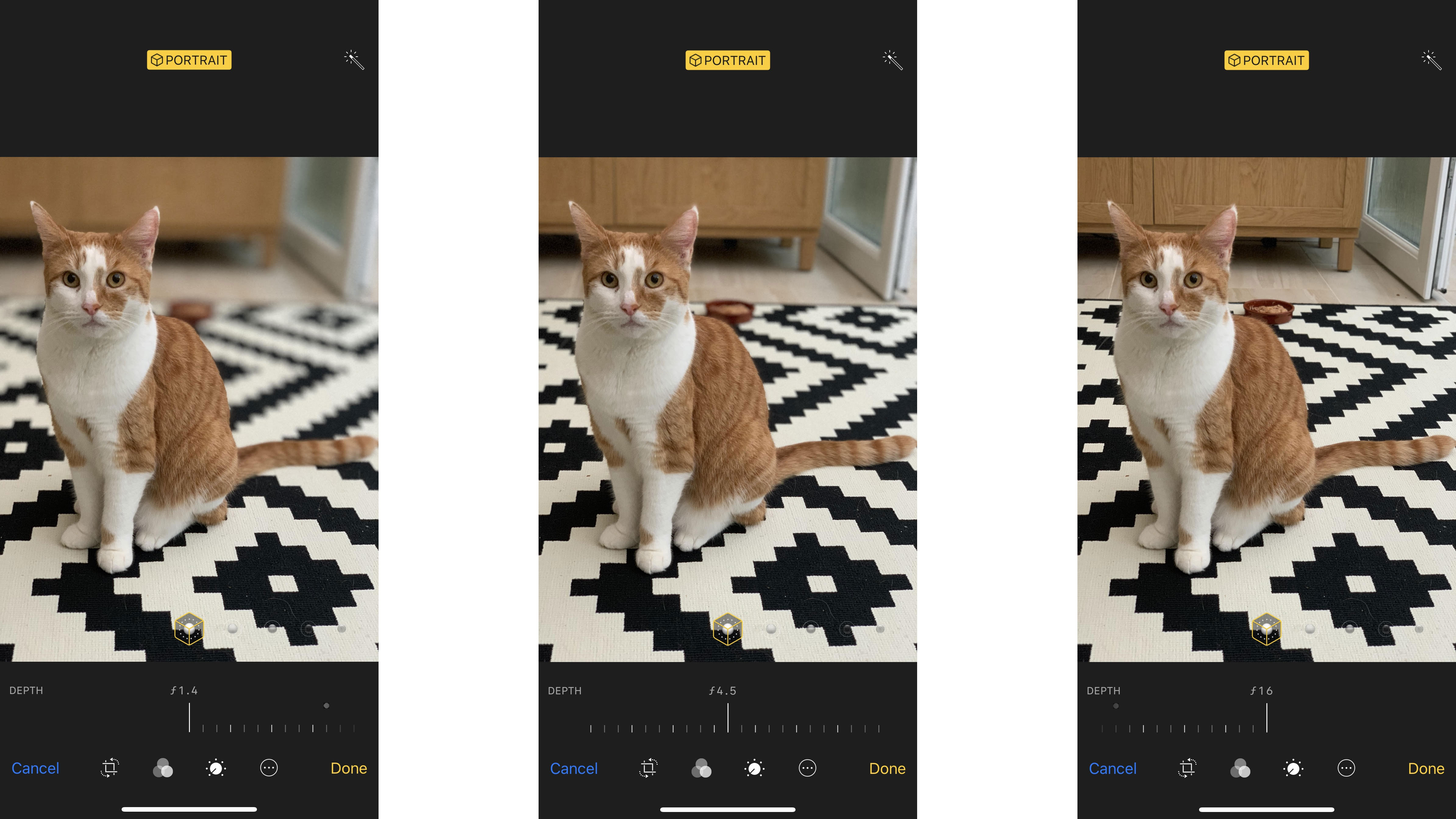
Moving round to the front, and the 7MP camera has also been upgraded over the selfie snapper on the iPhone X.
It also benefits from the new Smart HDR mode, and gets the addition of portrait mode. While the rear cameras capture the depth in a shot for a natural blur effect, the front camera works out the bokeh effect digitally.
The results are very good, but it's not quite as adept at cutting out the subject. Messy, fluffy hair can fool it, and sometimes the blur effect can spill over slightly onto the edges of the foreground.
All-in-all, the dual-camera on the iPhone XS Max is a small improvement over the iPhone X. If you look closely at the same scene show on each handset you'll notice the differences, but this isn't a huge leap forward in smartphone photography.
For a more detailed look at Apple's new camera setup take a look at our iPhone XS camera review, as that phone has exactly the same camera.
Camera samples



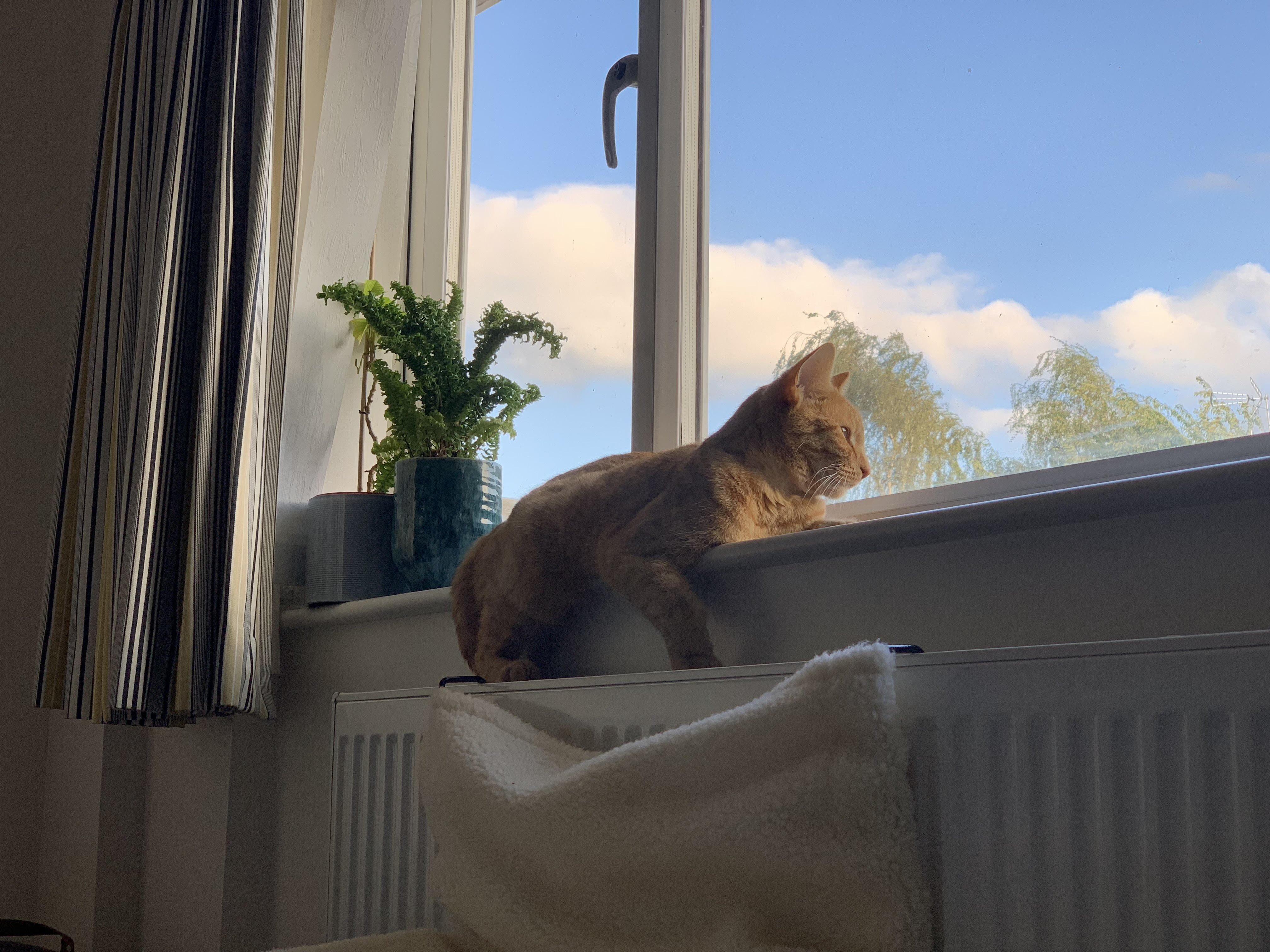


Verdict
The iPhone XS Max is something special. This is the first time Apple has really pushed its screen size boundaries, and by offering a huge 6.5-inch display it's made its smartphone line attractive to a new segment of potential customers.
Apple's App Store and iTunes are filled with great apps, games, movies and TV shows, and the firm now, finally, has a handset that can really make the most of them thanks to the massive screen on the iPhone XS Max.
The extra screen real estate will be music to the ears of gamers, while HDR support will please those addicted to Netflix and Amazon Prime video – and while the iPhone XS Max screen isn't the best on the market, it is the best screen on an iPhone, ever.
Apple's updates to the rear cameras (over the iPhone X) are minimal, but the ability to adjust the background blur on portrait shots and the improved Smart HDR mode offer greater flexibility and ultimately better image quality.
And while the iPhone XS Max is a big phone, it's also impressively compact. It's a touch smaller than the iPhone 8 Plus, but has a much larger display (6.5 inches vs 5.5 inches). It will still dominate your hand, but it's not as unwieldy as you might expect for a phone with a screen this size.
Ultimately though, it's the iPhone XS Max price that will likely be the sticking point for many. There's simply no getting away from the fact that this is a very, very expensive smartphone, even a year on from launch.
The iPhone XS offers everything the Max does bar the 6.5-inch display, for less, while the iPhone XR has a 6.1-inch display and even lower price tag, although it does make compromises in other areas. And if you really do have loads to spend then there's also the newer, even more powerful iPhone 11 Pro Max to consider.

Who's it for?
The iPhone XS Max is for those looking for the biggest screen of Apple's smartphone line. The firm has never offered a handset with a screen as big as the one on the iPhone XS Max, and that alone will have power users, gamers and video streamers champing at the bit.
You'll need the funds to bankroll your XS Max investment though, so if you're on a tight budget you may want to consider the more affordable iPhone XR.
While if money is no object and you want the best screen Apple has ever put on an iPhone, the newer iPhone 11 Pro Max is your phone. But the iPhone XS Max strikes a decent middle ground.
Should I buy it?
The iPhone XS Max is a premium smartphone that looks and feels the part. Sure it's expensive, but if your budget stretches you're unlikely to be disappointed with what you get in return.
As we've already mentioned, you won't find a bigger screen on an iPhone, and there's a huge amount of power inside the handset, which should ensure performance stays high throughout its lifetime.

Worried that the iPhone XS Max may be too big for you, or that its price tag is way above your budget, and want to know what other options you have?
Well have no fear, as we've pulled together some of the best alternatives to the iPhone XS Max below.
iPhone 11 Pro Max
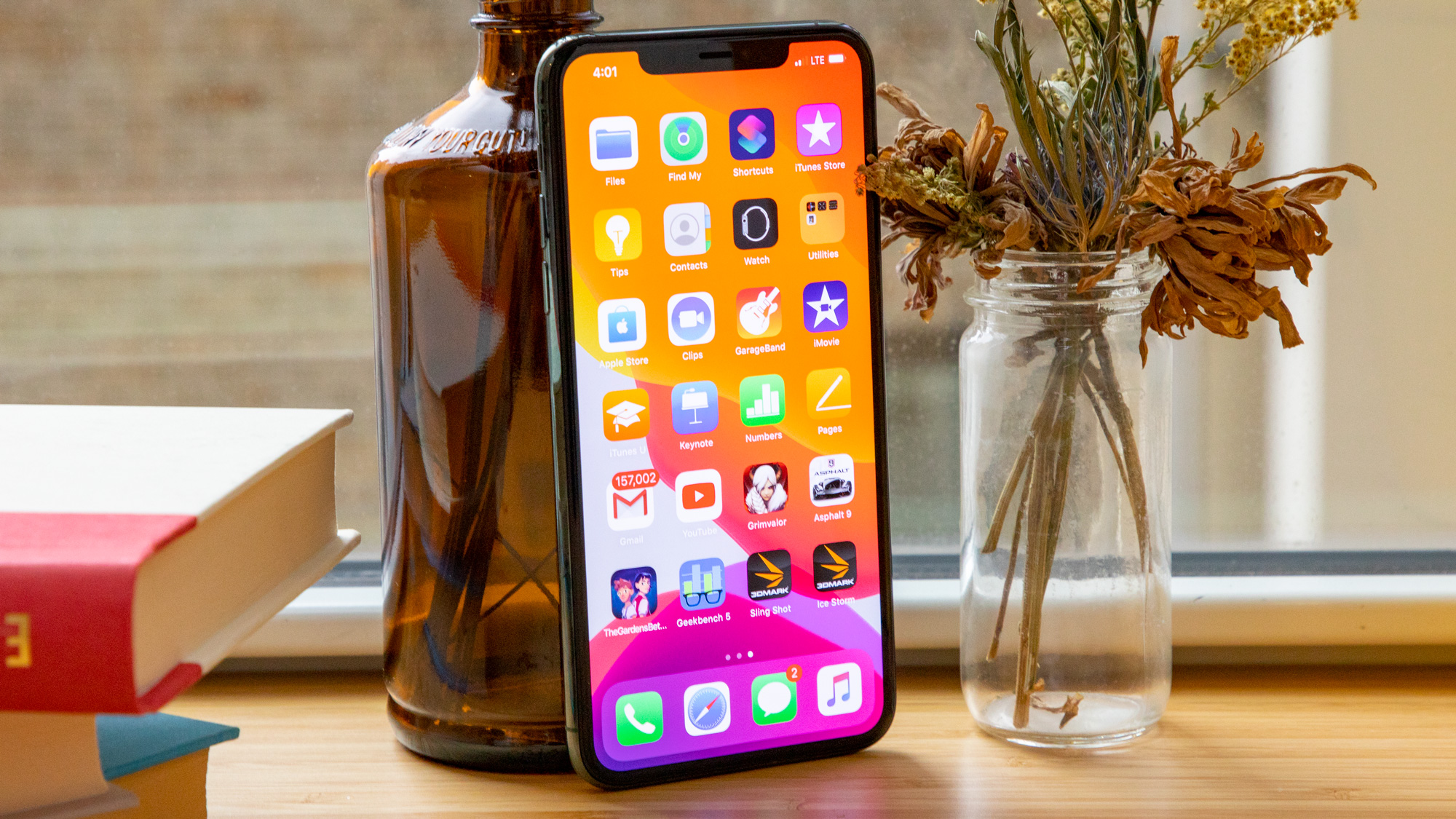
The iPhone 11 Pro Max is the successor to the iPhone XS Max and it has the same size screen coupled with even more power and an extra rear camera lens.
There are other changes too - the battery life is better on the iPhone 11 Pro Max, the design has been tweaked a little, and the speakers are better, but this isn't a vast upgrade.
It's also more expensive than the iPhone XS Max can currently be found for, so you should think hard about whether the improvements here are really things you need. But if you simply want the best big Apple phone, then this is it.
- Read our in-depth iPhone 11 Pro Max review
iPhone XS
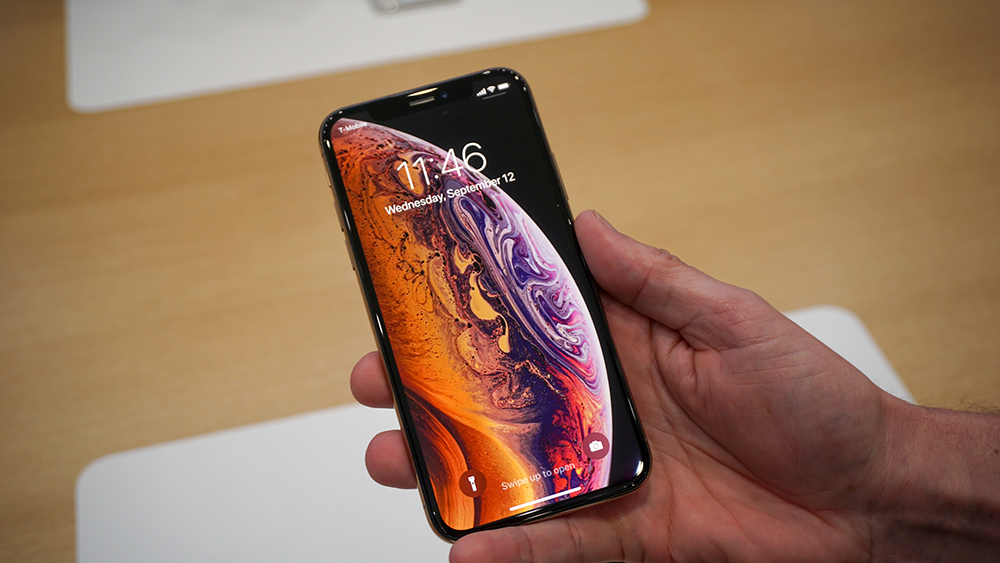
The iPhone XS has the same design, power, operating system and cameras as the XS Max; it just delivers them in a smaller package, and with a smaller, 5.8-inch display.
If you know that you want the latest Apple flagship phone, then you need to make the decision between the easier to handle, and slightly less expensive, iPhone XS, and the pricier, big screen-toting XS Max.
For those who watch a lot of movies, or are big into top mobile games such as PUBG and Fortnite, the extra screen real estate on the XS Max provides a better experience over the iPhone XS. However, for more general users the iPhone XS will likely be more tempting.
- Read our in-depth iPhone XS review
iPhone XR
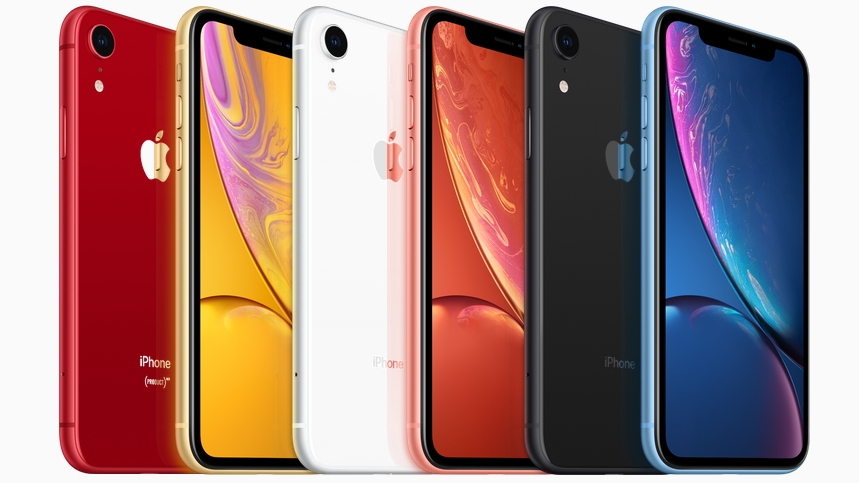
The iPhone XR offers up a large screen at a much lower price compared to the iPhone XS Max. It's still not 'cheap', but it at least gives you a viable alternative if the Max's price tag is simply too high.
You get a 6.1-inch display, which is smaller than the XS Max, but larger than the XS, with Apple's new A12 Bionic chip under the hood ensuring you have the latest power at your fingertips.
Its single rear camera isn't as good as the dual setup on the XS Max or XS, the LCD screen technology isn't as punchy as the OLED panel, and you don't get 3D Touch, wireless charging or HDR support for video playback.
- Read our in-depth iPhone XR review
iPhone 8 Plus
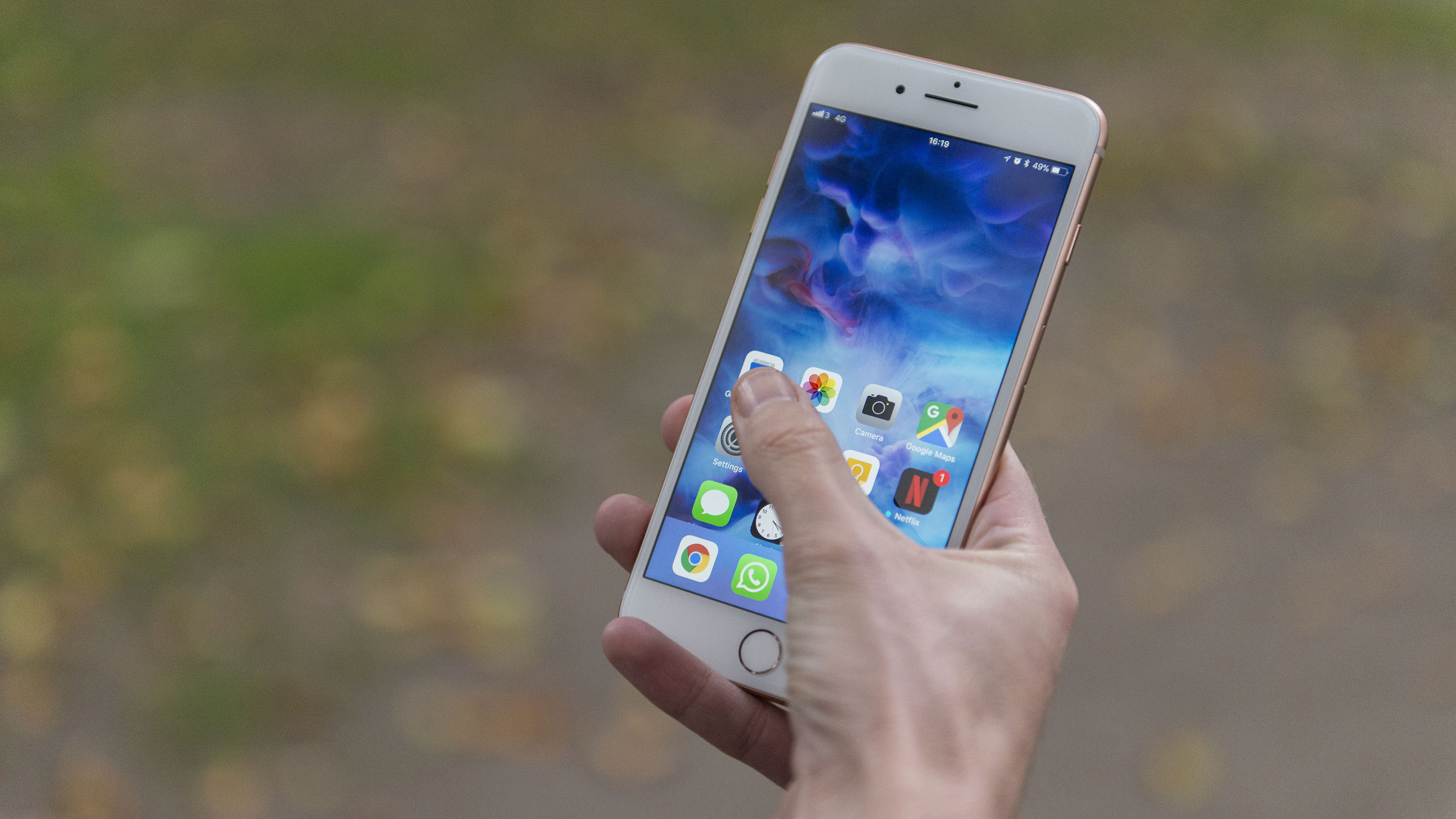
The iPhone 8 Plus is now a year old, but with the arrival of the XS Max it's had a price cut and has one feature its replacement can't boast: a Touch ID fingerprint scanner.
If you're still committed to the finger-reading tech and want a large screen then the iPhone 8 Plus is your best choice. The screen size may only be 5.5 inches, but you do get a home button, and a glass rear with wireless charging capabilities.
There's a powerful dual camera round the back as well, and while it may not be quite as good as the snappers on the XS Max it's still an accomplished offering. It's also been upgraded to iOS 12, so its software matches the latest iPhones.
- Read our in-depth iPhone 8 Plus review
Samsung Galaxy S10 Plus
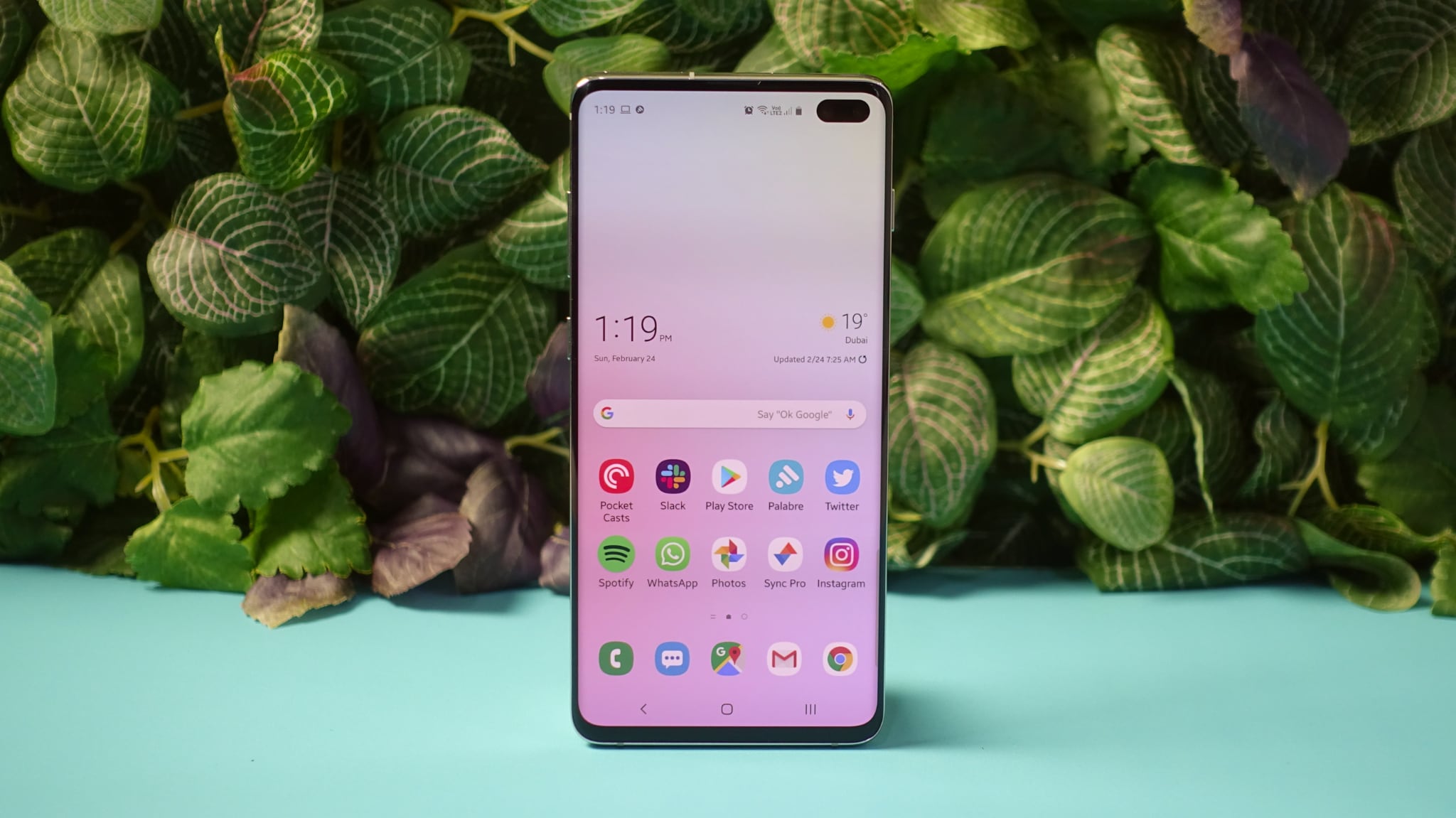
If you're open to Android then you might want to consider the Samsung Galaxy S10 Plus as an alternative.
This is arguably the closest Android competitor to the iPhone XS Max, though the starting price is a chunk less at $999 / £899 / AU$1,499.
The Galaxy S10 Plus has a marginally smaller but still massive 6.4-inch screen, and it's higher resolution at 1440 x 3040. It also avoids the notch, opting instead for a punch-hole.
There's an in-screen fingerprint scanner and more cameras than you might know what to do with, including three on the back and two on the front. The S10 Plus also has plenty of power, just like the iPhone XS Max. They're both top flagships with the operating system being the main difference.
- Read our in-depth Samsung Galaxy S10 Plus review
First reviewed: September 2018
from TechRadar: Technology reviews https://ift.tt/38ENleP
No comments:
Post a Comment